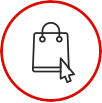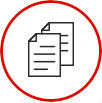
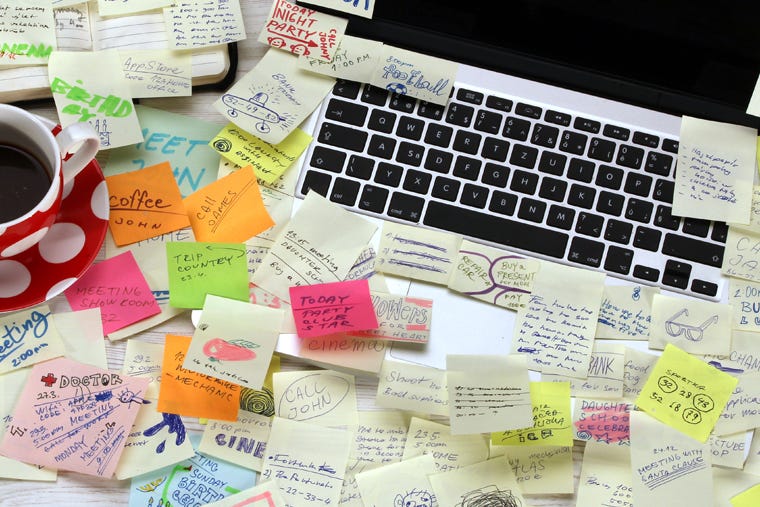
How To Bullet Journal
So there’s no escaping the phenomenon that’s currently sweeping the country – the Bullet Journal. If you aren’t sure exactly what it is or how to use it then keep reading…
What is a bullet Journal?
A no distraction organiser designed perfectly for you. Forget flowery planners and complicated, over packed diaries that you use for 2 weeks in January and then forget about. Meet your new BFF - The Bullet Journal
A must have for people who want to track the past, organise the present and plan for the future. Those whose minds race at 4am with thoughts of the next day – Bullet Journaling helps you get organised in a way that fits YOUR life.
Put simply it’s a DIY organiser: it can be your go to notebook when you need a to-do list, weekly diary, monthly planner, motivational best friend, workout journal, daily diary or meal planner! Once you start using it you will figure out how it works best for you.
Bullet Journal Supplies
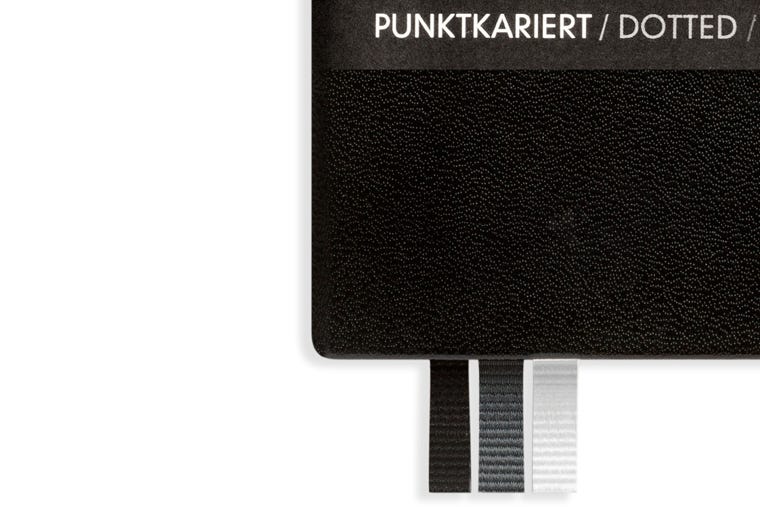

The first thing you need to get started is a notebook of some sort. Any notebook will do as you can bullet journal with a notebook of any kind but it’s recommended to opt for a Dotted Notebook . We also have the specific Bullet Journal available which makes life even easier! The dots ensure you can easily create bullets, tables and charts (straight!) and break pages up with ease. It’s a good idea to choose a notebook size that’s easy to shove in your bag and keep with you, so A5 works well, still giving you plenty of space to plan.
The next thing that will help you on your journey to organised euphoria is a Ruler . Yep, this staple piece of stationery lets you get stuck into the above mentioned table creating, safe in the knowledge a wonky, shaky line won’t be shaming your Journal any time soon.
Next you get to choose an awesome pen – because you need one! You may want to try a black fine liner to write the bulk of the journal such as a Staedtler Triplus as it gives clear, defined line (the last thing you want is smudging).
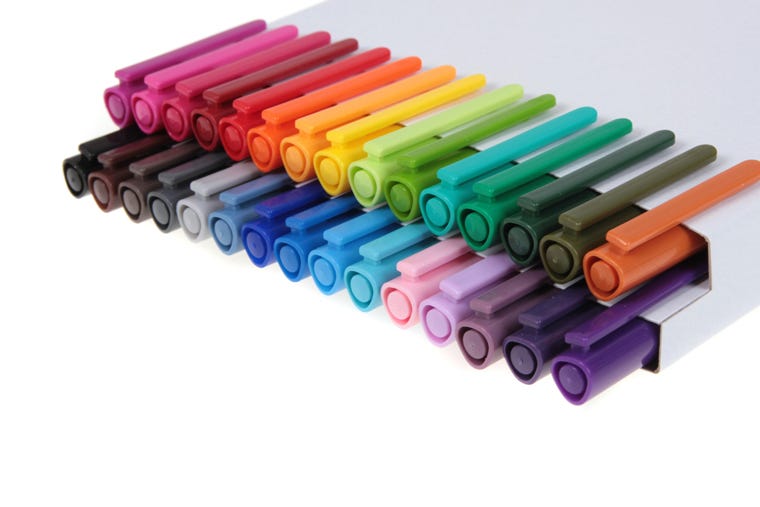

Colour code with a range of vibrant fine liners and make important stuff pop off the page. If you haven’t already now’s the time to jump on the Washi Tape band wagon. Patterned tapes can be used to make grids or even hide inky blunders.
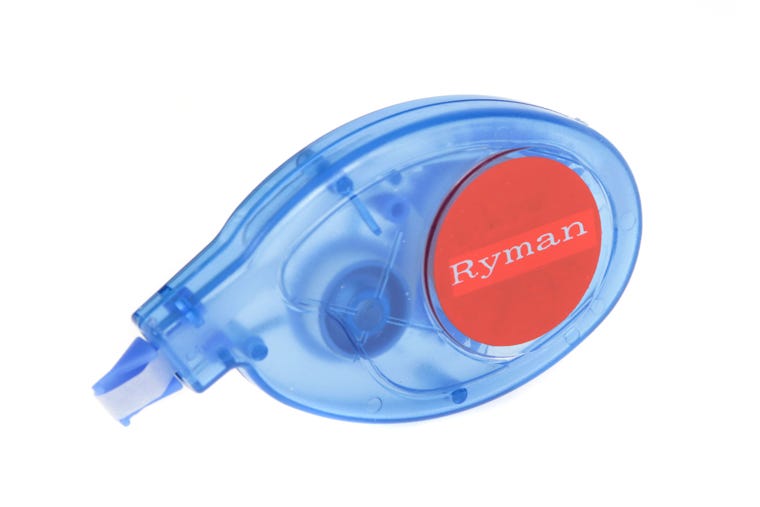

Speaking of which, investing in a good Correction Tape is worthwhile too. We all set out with the greatest intentions of making a new diary or notebook perfect and neat, so if you do make a mistake just erase, correct and move on!
Other than that it’s just the usual Army of Stationery that keeps us all organised such as Post It Notes and Index Tabs to so you can add additional notes and find pages easily, highlighters when you need certain copy to stand out, stickers (well why not!) and even stencils.
How to Start a Bullet Journal
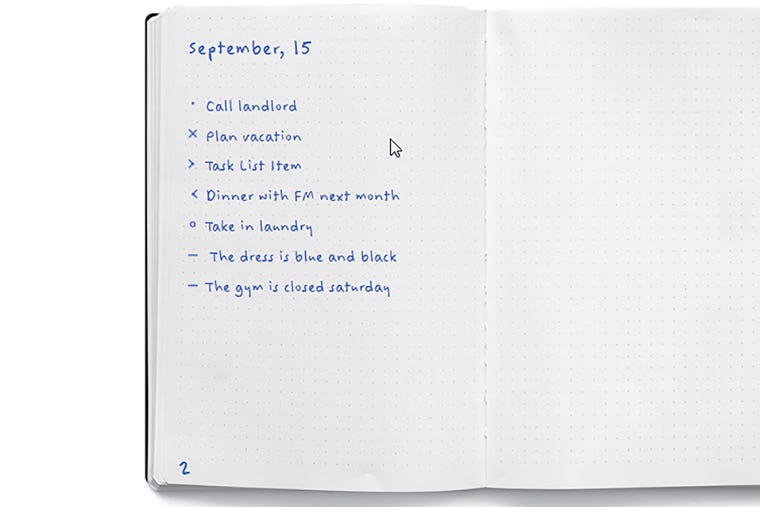

Now you’ve (hopefully) grasped the concept and invested in some essentials how do you get started? First you need to understand that Bullet Journaling is built around an organisational system with fancy names such as Rapid Logging, Indexes and Future Logs.
Below you will find all the overly complicated Bullet Journal terminology (brace yourself it’s quite a lot to wrap your head around) and a simple explanation to get you up to speed! Get ready to smell organisation in its purest form…
Index
Basically a contents table that you can update as your Bullet Journal evolves
Collections
Every page in the Bullet Journal is given a topic and these topics are referred to as Collections. Every entry is considered a Collection.
Daily Logs
Used on a day-to-day basis. The date will be the topic. Throughout the course of the day you will rapid-log Tasks, Events, and Notes as they occur
Monthly Logs
Basic to do list for that month. Monthly Log consists of two facing pages, one is the Calendar Page and the other is the Task Page
Rapid Logging
Using symbols (below) rather than words to keep you organised in your to-do planning (TOP TIP; Keep a key at the back of your journal to log what the symbols until you are fully in the swing of things!)
Future Log
Your year at a glance with goals/deadlines you want to achieve
Migrate
Is the act of reviewing everything you have entered and moving undone tasks to another Collection
Bullet
The Task Bullet is indicated by a dot: • and it turns into a completed, migrated or scheduled
• Task – Every task should have a bullet
X Completed - Once you’ve completed a Task, mark it with a X
> Migrated - If you didn’t complete a Task, you Migrate it to another Collection
< Scheduled - Tasks with specific dates in the future. These can be added to your Future Log
And It All Fits Together Like A Jigsaw…
- When you create a Collection, you add it to the Index
- You Rapid-log with Bullets and Symbols
- You Migrate Tasks between Collections as needed and on a monthly basis (basically move them to the next month if you haven’t nailed it yet!)
- At the end of the month, look over through all of your Collections (This includes the Monthly and Daily Logs) to assess whether they are worth doing. If they are worth doing, Migrate them to the new Monthly Log. If they are not worth doing then cross them out, remove the noise (use your correction tape here to maintain a pretty journal!)
- If they are worth doing, but at some other point in time, Schedule them in the Future Log (either in a specific month or in a blank Future Log page).
In order for Indexing to work, you need to number your pages, this way your collections can be added to the Index. Number each page you use and correspond that with the Index page. Use your coloured pens to help colour code the index, symbols and even daily tasks.
Use your pen and ruler to grid out monthly and yearly charts to track any goals you have. Keep your entries short and brief – label pages with topics and elaborate with bullet points and short sentences.
Welcome to Nirvana (for the messy of mind!)


Off you go! The beauty of the Bullet Journal is that nothing has to be written consecutively, just add information as you go – updating the Index on your way.
As you storm your way to smugly putting every chaotic though in your brain into categorised logs, pause for a moment and wonder why you are not using your laptop or tablet to achieve the same ends.
The answer?
Apparently our brains behave differently when we go analogue, and that's why the Bullet Journal is such an amazing system. It switches on your brain and encourages more thorough thought processes, getting all those ideas and plans out of your noggin and onto paper!





